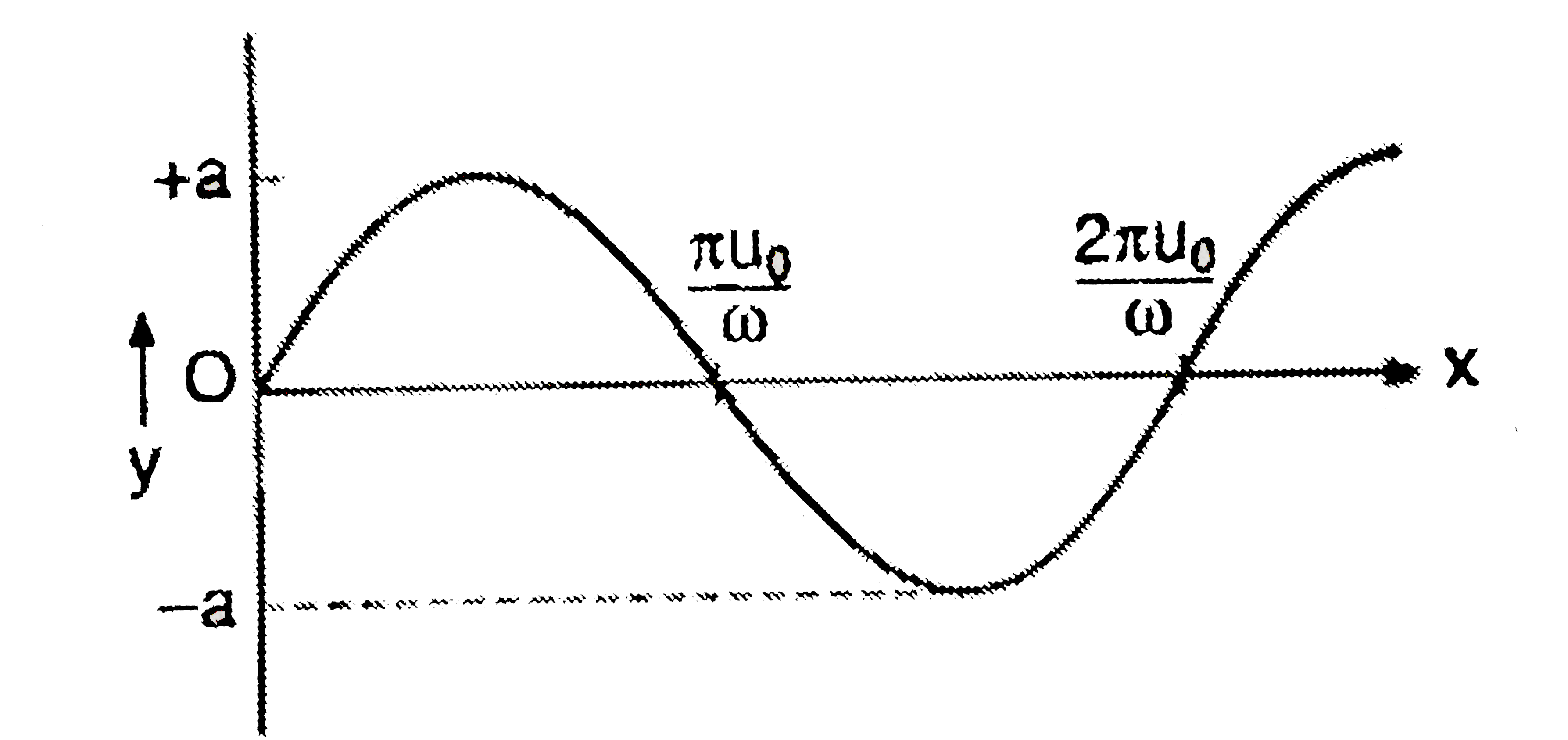A particle is moving in a plane with velocity →v=u0ˆi+kωcosωtˆj. If the particle is at origin at t=0, (a) determine the trajectory of the particle. (b) Find its distance from the origin at t=3π/2ω.
In terms of components :
→v=ˆivx+ˆjvy
So, vx=u0 and vy=aωcosωt
i.e., dxdt=u0 and dydt=aωcosωt
Which on integration gives
x=∫u0dt and y=∫aωcosωtdt
i.e., x=u0t+A and y=asinωt+B
Now as at t=0,x=0 and y=0
So, A=0 and B=0
∴x=u0t....(i) and y=asinωt
(a) Substituting the value of t from Eqn. (i) in (ii), y=asin(ωx/u0)
Which is the desired trajectory and is a since curve as shown in Fig. 4.9.

(b) For t=(3π/2ω) from Eqns. (i) and (ii), we have i.e., x=u0(3π/2ω) and y=−a
So, distance from the origin at t=(3π/2ω) will be
r=√x2+y2=√[a2+(3πu0/2ω)2]
Topper's Solved these Questions
- MOTION IN A STRAIGHT LINEBOOK - GRB PUBLICATIONCHAPTER - MOTION IN A STRAIGHT LINEEXERCISE - Problem
14 Videos
- MOTION IN A STRAIGHT LINEBOOK - GRB PUBLICATIONCHAPTER - MOTION IN A STRAIGHT LINEEXERCISE - Problems and Practice
16 Videos
- FRICTION AND CIRCULAR MOTION BOOK - GRB PUBLICATIONCHAPTER - FRICTION AND CIRCULAR MOTION EXERCISE - Comprehension type
11 Videos
- MOTION IN TWO AND THREE DIMENSIONSBOOK - GRB PUBLICATIONCHAPTER - MOTION IN TWO AND THREE DIMENSIONSEXERCISE - All Questions
210 Videos
Similar Questions
A particle is moving in a plane with a velocity given by, →u=u0ˆi+(ωcosωt)ˆj, are unit vectors along x and y-axes respectively. If the particle is at the origin an t=0, then its distance from the origin at timet=3π/2ω will be
View SolutionA particle is moving in a plane with velocity given by u=u0i+(aωcosωt)j, where i and are j are unit vectors along x and yaxes respectively. If particle is at the origin at t=0.
(a) Calculate the trajectroy of the particle.
(b) Find the distance form the origin at time 3π/2ω.
View Solution
Knowledge Check
A particle moves in the xy plane according to the equation
→r=(ˆi+2ˆj)Acosωt
The motion of the particle isAon a straight lineBin an ellipseCperiodicDsimple harmonic.A particle moves in x-y plane according to the equation ¯r=(ˆi+2ˆj)Acosωt the motion of the particle is
Aon a straight line with a constant speedBon an ellipseCperiodic not SHMDsimple harmonicA particle is moving in a plane with velocity given by →u=u0ˆi+(aωcosωt)ˆj, where ˆi and ˆj are unit vectors along x and y axes respectively. If particle is at the origin at t=0. Calculate the trajectory of the particle :-
Ay=asin(u0ωx)By=asin(ωxu0)Cy=1a.sin(u0ωx)Dy=1a.sin(ωxu0)
A particle moves in x-y plane according to the equation ¯r=(ˆi+2ˆj)Acosωt. The motion of the particle is
View SolutionA particle is moving with a position vector, →r=[a0sin(2πt)ˆi+a0cos(2πt)ˆj]. Then -
View SolutionA particle moves in xy plane with a velocity given by →V=(8t−2)ˆi+2ˆj.. If it passes through the point (14,4) at t=2 sec , then give eqution of the point
View SolutionThe motion of a particle is given by x=Asinωt+Bcosωt. The motion of the particle is
View SolutionPosition vector of a particle moving in x−y plane at time t is r=a(1−cosωt)ˆi+asinωtˆj. The path of the particle is
View Solution
